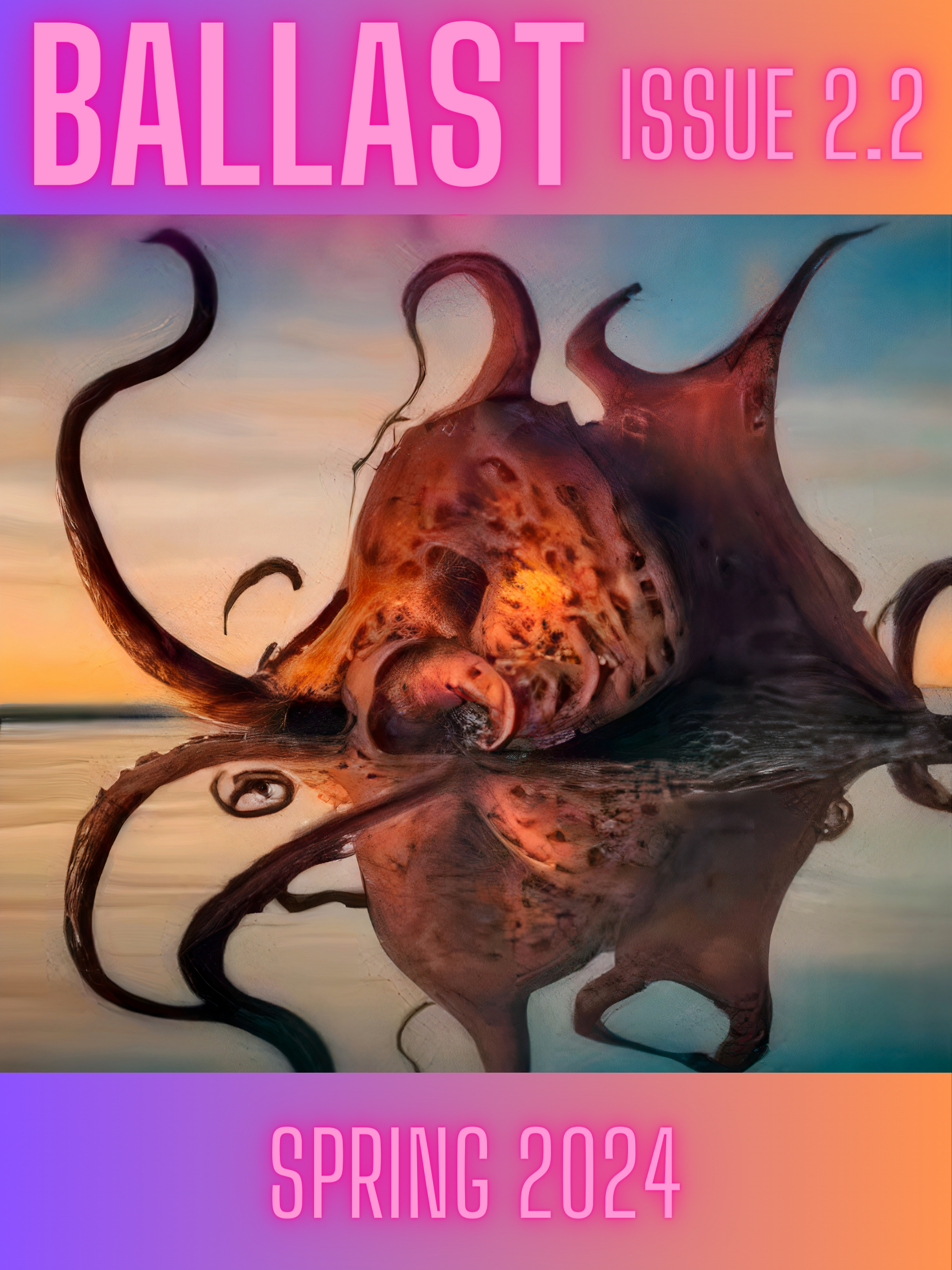Editorial Introduction
ballast 2.2
It used to annoy me when people referred to two poems as being “in dialogue” when, practically speaking, they were not. (I was a pedantic child.) I remember arguing that Raleigh’s “Nymph’s Reply” was hardly in conversation with Marlowe’s “Passionate Shepherd,” as a conversation required the possibility of exchange. Raleigh’s poem, written after Marlowe’s death, always seemed to me like a bit of a cheap shot, like making a witty retort well after a fight, alone in your room, or, perhaps more like a subtweet, visible, directed at someone, but certainly not talking with them.
My interest in poetry that enacted one-sided dialogue continued into my graduate studies, where I wrote about the problem, or perhaps imprecision (I was a pedantic graduate student) with thinking of prayer poetry as speech in conversation, given several thorny problems around divine silence.
Imagine my delight, then, when we started ballast and I could facilitate dialogues that would not (hopefully) motivate a rant from my younger selves about intersubjective necessity. In this space I have the great pleasure of acting as a kind of poetry matchmaker, putting pairs of poets in touch with one another and asking them to read each other’s work and respond. It is my not-so-secret hope that these dialogues might continue past the issue of ballast where they appear.
The dialogues in this issue proliferate with metatextual resonances: Justin Lacour and Kayla Beth Moore meditate together on the ongoing conversation that is marriage & the spiritual and perhaps even monstrous implications of joining two lives together; Eliza Guerra and Parker Logan engage in the first collaborative dialogue we’ve so far seen, an epistolary exchange of ideas* that unfolds, among other things, a growing mutual admiration which we can track through the development of their address to one another (the first letters begin with formal address and quickly shift to a delighted emphatic exclamation of the other’s name).
There are other conversations or non-conversations at play in this issue, too, perhaps more tentacled than even my pedantic categorizing could account for: Robert David Carey tries to discern how to think about (let alone talk to) “a thing extraterrestrial”; Georgia Hertz’s “we the shepherds” surely must discuss the naming of the titular sheep, Handsome, but we never hear them clamor; Herb Kitson’s bawdy diner poem essentially takes the form of the call and answer, powerfully affirmative; GRSTALT Comms aims to erase the author by producing a collaborative poetry, though it strikes me this is both an erasure and a proliferation of author(s) in conversation, even if they all remain unnamed; I could go on, but I should let you read the issue.
The creature on the cover of our newest issue looks like it is holding forth, gesticulating wildly, mirrored in an idyllic watery expanse, talking to itself or to you or to someone we do not see. Will the great tentacle come down and disturb the water? Will the creature speak? Should we look or listen or should we draw ourselves up to say something back?
— Sara Judy, for ballast
*another resonance: over the summer of 2021 I exchanged a series of letters with my friend and issue 1.1 contributor Renee Yaseen toward an epistolary review of Kaveh Akbar’s Pilgrim Bell. This exchange rhymes with Logan and Guerra’s letters, several of which reference Akbar’s poetry.
